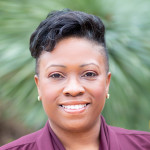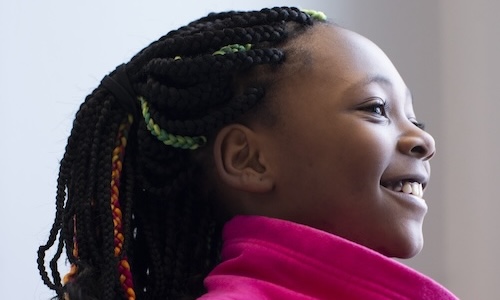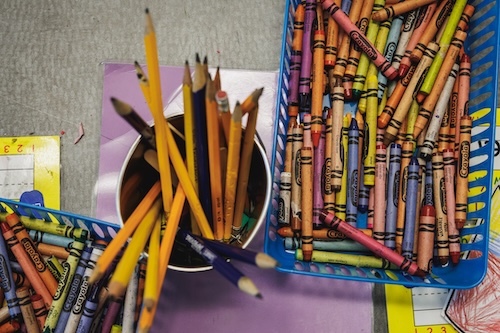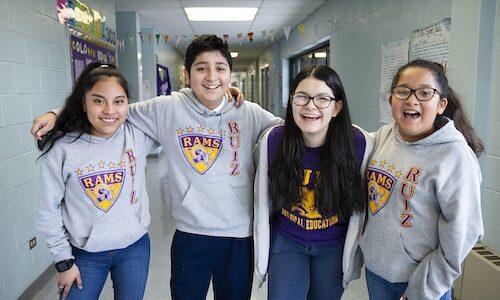
When I taught high school business classes, it was so upsetting to see 16- and 17-year-olds struggling to access the reading material. No one should get to high school, or beyond, and find themselves struggling to read.
On multiple measures, it’s clear we’re not making the progress needed in literacy. Recently released federal data, based on assessments given just before everyone went into the pandemic lockdown in early 2020, showed flat scores for elementary students and declines among middle schoolers. And the latest data from the research team at NWEA, based on MAP® Growth™ tests, shows that all students lost ground academically amid disruptions to schooling associated with the pandemic, with disadvantaged youth hardest hit.
As the director of policy and advocacy at NWEA, I work with my colleagues to look for solutions to problems in American education, and I’m grateful my role creates opportunities for me to connect with passionate educators and advocates for students, teachers, and families around the country. I recently connected with two experts in literacy education for a deep dive on reading instruction and what’s needed to bring about positive change. Below, you’ll find highlights from my conversations with Dr. Kymyona Burk, a senior policy fellow at ExcelinEd who supports states in implementing policies related to early literacy, and Dr. Tiffany Peltier, an NWEA research scientist and expert in the science of reading and literacy instruction. Our conversations have been lightly edited for clarity and length.
We talked about:
- The disconnect between what teachers are taught in educator preparation programs and what’s needed in the classroom
- The science of reading
- Steps policymakers can take to improve literacy instruction
- The role of data, both traditional and nontraditional, in analyzing how students are doing
- Effects of the pandemic on schooling
What drew you to literacy education, and what motivates you to keep working every day toward improving how we teach reading and writing in U.S. classrooms?
Kymyona Burk (KB): I taught reading in elementary school, and I also taught middle school and high school English and social studies. At the high school level, I was tasked with teaching struggling students. It just became a passion of mine to understand how students got this far. How many classrooms had they been in where they were not recognized as students who were struggling to read, or where their teachers didn’t have the tools to address their learning difficulties? I wanted to be part of ensuring our children didn’t become adults who couldn’t read and couldn’t become literate members of their community.
No one should get to high school, or beyond, and find themselves struggling to read.
Tiffany Peltier (TP): I got my master’s to be a reading specialist, and that’s when I learned about this huge research–practice gap, the gap between what we know about teaching reading effectively and what is actually being taught to teachers. I’ve learned a lot about effective methods of teaching and what teachers are getting in their programs. Seeing that gap is alarming. That’s what really hooked me. I was also able see the growth in my own students when I moved to more effective practices, and it’s always great as a teacher when you can see that growth.
What does strong literacy instruction look like in the classroom? What should we see if we walk into an English language arts block in the early elementary grades?
TP: We know we want to make sure children are learning letter sounds on day one. They’re putting them together and taking them apart. They’re playing with that language. They’re writing their letters. They have good handwriting instruction and are getting content-rich science and social studies instruction so that they’re developing the background knowledge needed to understand a lot of vocabulary and learn new words.
KB: You want to see a focus on language comprehension and language acquisition, and you also want to see instruction in which teachers explicitly and systematically teach them how to decode. It includes not only phonics, word recognition, and spelling, but also sentence structure and vocabulary. We need to ensure teachers are supported in knowing how to address all those needs of our students.
What are your thoughts on the role of teacher preparation programs and policymaking in helping to improve literacy instruction in the United States? Why is it important for everyone to be thinking about and prioritizing early literacy education?
KB: How well our teachers are prepared directly impacts how well they’re going to teach our students and the outcomes we’ll see in our screener data or our state assessment data.
I was initially alternatively licensed to teach English in Mississippi and certified to teach in middle and high schools after receiving a master’s degree in teaching English. None of my coursework included early literacy instruction. Even for recertification, educators can choose what we want to get our continuing education units (CEUs) in. My strong belief is that state education agencies, which are usually the licensing agencies for teachers, should require a certain number of those hours, regardless of whether you teach elementary, middle, or high school, to be in literacy instruction—even for administrators.
TP: If we really want to improve teacher education, we need to make sure the people who are training the teachers are getting the support and training that they need. Right now, there is no curriculum for teacher educators, the faculty in our schools of education. We need to provide them with support, so they can increase their own knowledge and pass that along to their students.
What’s the role of data and assessments in supporting students and teachers? As we think about our response to the pandemic, is there additional qualitative or quantitative data that we can capture to improve student learning outcomes? What are the data points, along with what we’re already collecting, that could help us understand student needs?
TP: We really want to make sure we’re screening students as soon as they enter school on things like letter knowledge. Do they know their sounds and how those sounds match to letters? The screening instrument you use can give you data to determine which students might need early interventions. The earlier we start with services, the greater gains kids can make and the less that gap will grow between their reading achievement and their peers’ reading achievement. Also, whatever screening instrument you’re using, you want to make sure you look at decoding—difficulties turning the squiggles on the page into words—and whether they are having comprehension difficulties, understanding what they’re reading. Those will require two different interventions. An assessment like MAP® Reading Fluency™ can help.
KB: We need to think about how teachers can have more vertical conversations across grades. Questions teachers can ask each other are things like, what gets a particular student excited about learning? As this child’s current teacher, how can I talk to the teacher before me to better understand who the student is? To me, vertical conversations and passing along assessment data are both important. We say all the time things like, “A teacher’s classroom had 65% of the students doing this.” But in that 65% is someone’s child. How can we begin to look at students beyond those numbers, beyond those percentages? It’s extremely important, especially on the heels of a pandemic in which children have been isolated from their peers, their teachers, and structure.
We really want to make sure we’re screening students as soon as they enter school on things like letter knowledge.
What are you hearing and seeing related to literacy instruction, as it relates to teaching and learning in a pandemic? Are you seeing new challenges, or is what you’re seeing a reinforcement of what we already knew about student learning? What are you hearing regarding what students and families need right now? And what are the specific needs of early learners?
TP: Students who have the least opportunity were hit hardest by COVID. We need to make sure that students in any school are learning to read, but especially the students who come to school with more difficulties. We want to make sure we’re catching them early and providing them with interventions.
KB: Before the pandemic, we weren’t performing well as a nation. Our 2019 NAEP (National Assessment of Educational Progress) scores show that about a third of our students were proficient readers in fourth grade. The pandemic has brought a lot more people into the conversation. There are a lot of parents who were sitting next to their children when they were learning virtually and were able to experience those struggles firsthand. They were seeing how teachers were teaching and what supports their children need. That’s different from sending a child to school, the child coming home, and seeing a progress report.
LP: This stepped-up family engagement and involvement in schools gives me hope. Where else are you seeing hopeful signs in education today?
KB: During the pandemic, people began to really “look under the hood” at the subgroups, at all students. It doesn’t matter how a state is ranked on NAEP. If the gap between your Black and white students is 27 or 30 scale score points, it means you’re not supporting all students, which is our job. We’re looking under the hood more now, which is going to support our teachers and our students for years to come.
There is also this new intentional investment in educators, unlike what we’ve seen before. There are some states looking to give teachers raises and incentives. We know they’ve been the superheroes without capes during this pandemic, and families have as well. There is a more intentional focus on supporting those standing in front of children every day.
Learn more
Check out ExcelinEd to learn more about how Kymyona and her team are supporting states in pursing improvements to education across the country. And for more on Tiffany’s work and the NWEA research team, check out our research page.
We’re @NWEAPolicy on Twitter and would love to hear from you.







